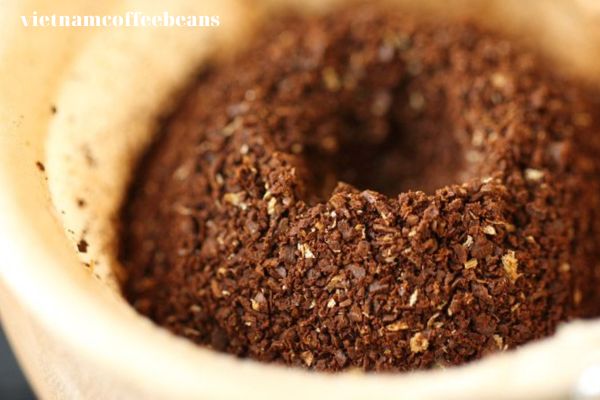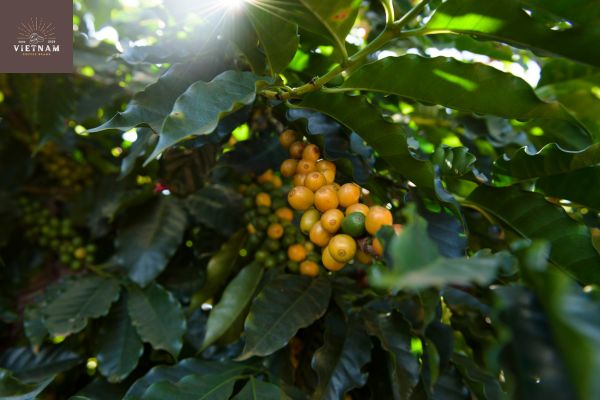Starmaya thrives at elevations around 1300 meters and in agroforestry systems with healthy soil. While not uniform, it offers the perfect balance between quantity and quality for coffee growers.
Organizations like World Coffee Research (WCR) provide valuable resources to advance coffee supplies and support farming communities worldwide. WCR offers programs to improve the livelihoods of coffee producers and has developed a catalog of coffee varieties like Starmaya.
The combination of Starmaya’s outstanding traits and the efforts of WCR is shaping the future of specialty coffee.
Key Takeaways
- Starmaya is a male-sterile Arabica plant discovered in Nicaragua and crossed with the rust-resistant variety Marsellesa.
- Starmaya has shown good performance in field trials and is suitable for agroforestry.
- It is a high-yielding variety with good quality potential, but requires healthy soil and an elevation of 1300 meters.
- Starmaya is resistant to rust and is part of a group of related varieties including Centroamericano, Evaluna, EC18, and Milenio.
What is Starmaya coffee Variety?

Starmaya coffee is a cross between the Arabica plant and the rust-resistant Marsellesa variety. It was discovered in Nicaragua and has shown high yield potential and rust resistance in field trials.
However, Starmaya requires an elevation of 1300 meters and healthy soil conditions. It also needs specific cultivation techniques for successful farming. Starmaya is not uniform in variety, with some variations in characteristics.
When grown properly, Starmaya can produce very high yields of good quality coffee. Like IHCAFE 90, it shares a commitment to exceptional cup quality that enchants coffee lovers.
Starmaya Coffee Characteristics and Benefits

Starmaya coffee has high yield potential and strong resistance to coffee rust. These traits make Starmaya suitable for agroforestry farming systems.
Starmaya originated from the discovery of a male-sterile Arabica mutant plant in Nicaragua. Researchers crossed this Arabica mutant with Marsellesa to develop the Starmaya variety.
This collaboration between CIRAD and ECOM resulted in a productive, disease-resistant coffee cultivar. Here are some key characteristics and benefits of Starmaya:
High Yield: Starmaya is known for its exceptional productivity, making it highly desirable for coffee farmers. Its very high yielding potential ensures a bountiful harvest.
Rust Resistance: Starmaya exhibits strong resistance against rust, a common and destructive disease that affects coffee plants. This resistance helps protect the plant and maintain its productivity.
Agroforestry Suitability: Starmaya is well-suited for agroforestry practices, allowing farmers to integrate coffee cultivation with other crops or trees. This promotes biodiversity and provides additional income opportunities.
Quality Potential: Despite its high yield, Starmaya doesn’t compromise on quality. It has the potential to produce coffee beans of good quality, ensuring a satisfying cup of coffee for consumers.
Development of Starmaya Coffee
In 2001, researchers discovered a male-sterile Arabica mutant called CIR-SM01. Male-sterile plants can be used as mother plants in breeding programs. CIR-SM01 was crossed with the variety Marsellesa to produce a new variety called Starmaya.
Starmaya yielded 30% more beans than Marsellesa in trials. It also demonstrated good beverage quality and resistance to coffee leaf rust. By using CIR-SM01 as a male-sterile mother plant, researchers were able to develop Starmaya as a productive, high quality, and rust-resistant coffee variety.
Potential Starmaya F1 Hybrid Seed Production of the Seed Garden
Research found natural pollination to be an efficient method for producing Starmaya hybrid seeds. A 0.5 ha seed garden yielded 100-150 kg of seeds per year, which could plant over 100 ha annually. However, the sterile male CIR-SM01 had lower yields than commercial cultivars.
Seed garden production is cheaper than in vitro propagation, costing $0.07 per seed vs $0.14 for somatic embryogenesis. Global demand for new coffee seeds is estimated at 250-500 million per year. Approximately 50-100 million hybrid seeds would be needed annually for widespread adoption.
This scale of production is not feasible via cloning. But 100-200 ha of seed gardens with sterile male parents like CIR-SM01 could potentially meet global hybrid demand.
Bean Quality and Cup Quality
Analysis revealed that Starmaya coffee had an increased distribution of larger bean sizes compared to Marsellesa. 25% of Starmaya beans were retained by sieve size 19, while only 2.5-5.8% of Marsellesa and Caturra beans reached this upper size limit.
Additionally, 70% of Marsellesa beans were retained by sieve sizes 16-18, while the same percentage of Starmaya beans were retained by the larger 17-19 sieve range. Overall, Starmaya had 7% more exportable large beans, which have higher economic value.
| Sieve number | Bean size distribution by size (%) | ||
|---|---|---|---|
| Caturra red (control) | Marsellesa® | Starmaya F1 hybrid | |
| n° 20 (big) | 1.05 | 0.48 | 10.62 |
| n° 19 | 5.74 | 2.48 | 25.05 |
| n° 18 | 21.89 | 15.80 | 30.65 |
| n° 17 | 33.86 | 38.45 | 16.91 |
| n° 16 (medium) | 14.46 | 22.91 | 8.02 |
| n° 15 | 9.83 | 13.37 | 5.22 |
| n° 14 | 3.80 | 4.62 | 1.11 |
| n° 13 (small) | 1.43 | 1.02 | 0.91 |
| Defects | 7.94 | 0.87 | 1.51 |
| Total | 100.00 | 100.00 | 100.00 |
| Exportable (%)* | 90.63 | 98.11 | 97.58 |
Cup quality analysis showed Marsellesa scored highest for aroma compared to Starmaya and Caturra. Starmaya and Marsellesa displayed slight caramel flavor notes, while Caturra had more chocolate.
Marsellesa also scored higher for acidity, overall flavor, and aftertaste. However, Starmaya had more body and sweetness than Marsellesa. Ultimately, Marsellesa obtained the highest merit score of 83.13, followed by Starmaya at 82.5 and Caturra at 82.0.
| Sensorial attributes | Caturra red (control) | Marsellesa® | Starmaya F1 hybrid |
|---|---|---|---|
| Quality | SHB | SHB+ | SHB+ |
| Aroma | 7.63 | 7.75 | 7.63 |
| Flavor | 7.63 | 7.88 | 7.63 |
| After taste | 7.5 | 7.75 | 7.63 |
| Acidity | 7.5 | 8 | 7.75 |
| Body | 7.63 | 7.63 | 7.75 |
| Uniformity | 10 | 10 | 10 |
| Clean cup | 10 | 10 | 10 |
| Balance | 7.63 | 7.75 | 7.63 |
| Sweetness | 8.88 | 8.75 | 8.88 |
| General impression | 7.63 | 7.63 | 7.63 |
| Final merite note | 82 | 83.13 | 82.5 |
World Coffee Research (WCR) Program

World Coffee Research (WCR) is a non-profit collaborative research and development program that aims to improve coffee supplies and livelihoods worldwide. They provide valuable resources like a printable coffee variety catalog to empower farmers.
WCR offers programs and initiatives to enhance coffee quality, productivity, and cultivation practices. This ultimately benefits coffee-producing families. One of their key achievements is the discovery and development of the SL34 coffee variety, known for its exceptional flavor.
WCR is an agricultural research organization with a farm in El Salvador. Through partnerships, they keep farmers informed to support coffee production. Their work with varieties like Starmaya contributes to continuous innovation in the global coffee industry.
Frequently Asked Questions
Conclusion
Starmaya coffee is a groundbreaking cultivar that is the first F1 hybrid to be propagated by seed, rather than by costly and complex biotechnology. It was developed from a cross between Marsellesa and a male-sterile Ethiopian or Sudanese landrace variety.
It has high yield potential, resistance to coffee leaf rust, and very good cup quality, especially at medium altitudes. It is also easier and cheaper to produce and distribute than other F1 hybrids, making it more accessible to farmers.
Starmaya coffee is an innovative and promising variety that offers many benefits for the coffee industry.






